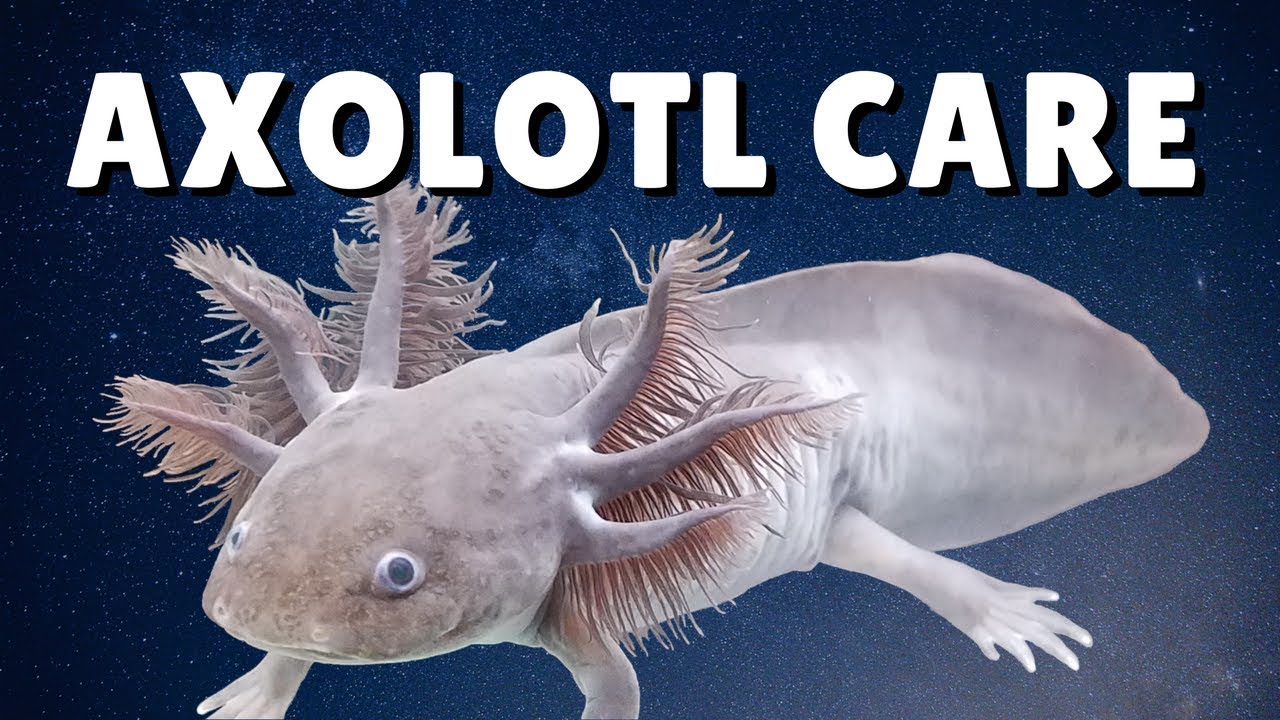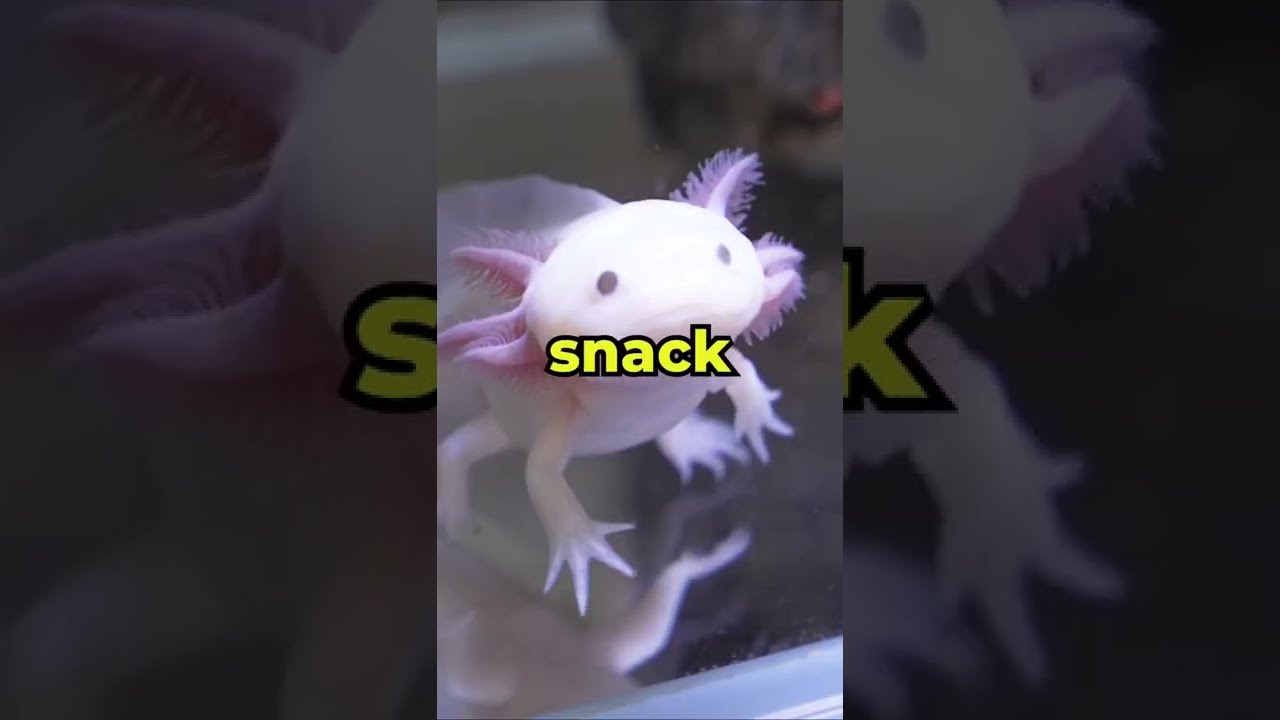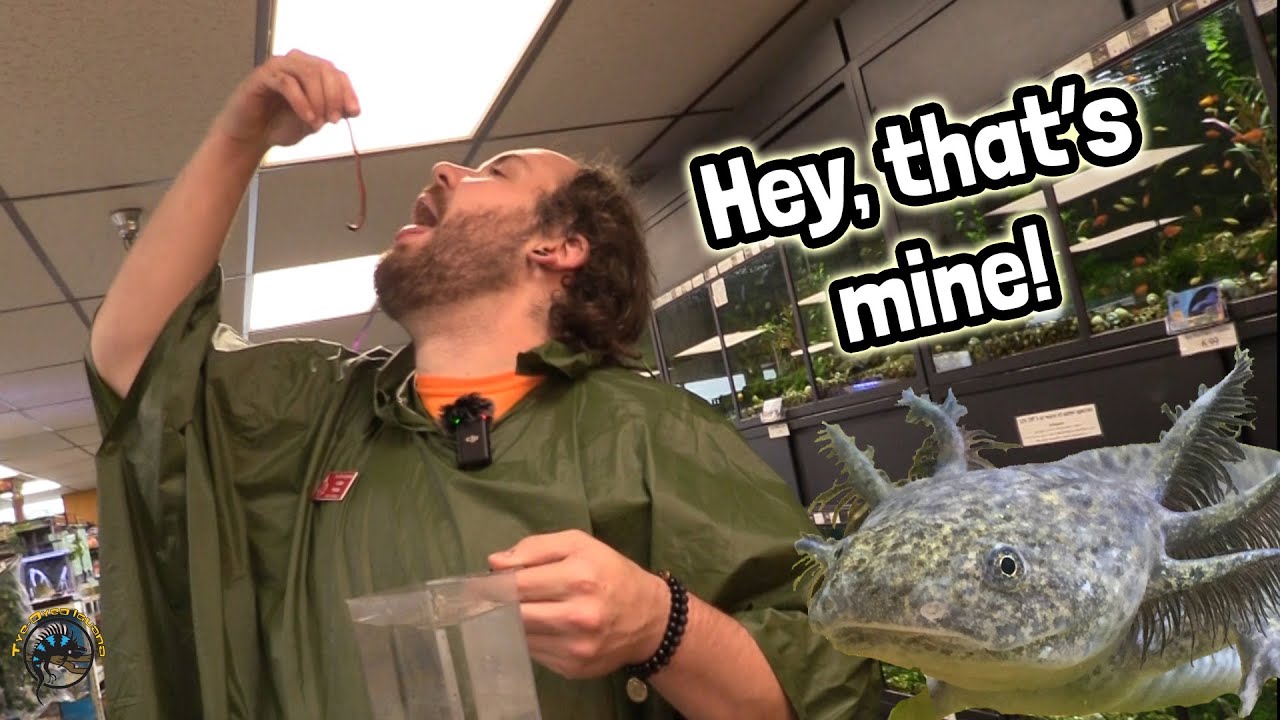Axolotls, those charming amphibians swimming through the lakes of Mexico, have specific dietary needs that play a vital role in their wellbeing. So, what is an axolotl’s diet? This query holds significant importance for pet owners looking to keep their unique friends healthy and thriving. Proper nutrition not only fuels their growth but also enhances their remarkable regenerative abilities. In this article, we’ll dive deep into the nutritional requirements for axolotls, along with the best food options, feeding practices, and how to monitor their health.
## What Is an Axolotl’s Diet That Keeps Them Thriving
To put it mildly, axolotls are carnivorous creatures that thrive on a protein-rich diet. As they grow, their dietary needs evolve, so it’s crucial to adjust their food accordingly. Initially, hatchlings feast on smaller prey; as they mature, larger and more varied food options become essential. A balanced diet not only supports their health but also boosts their immune system, allowing them to combat diseases and stress effectively.
Feeding axolotls is not just about the food itself but also how it’s prepared and offered. The right diet can be the difference between a short life and one that lasts for 10 to 15 years. Now that’s a substantial lifespan, especially when well cared for. Each life stage requires a different approach, leading us to explore the top food choices that will keep axolotls thriving.
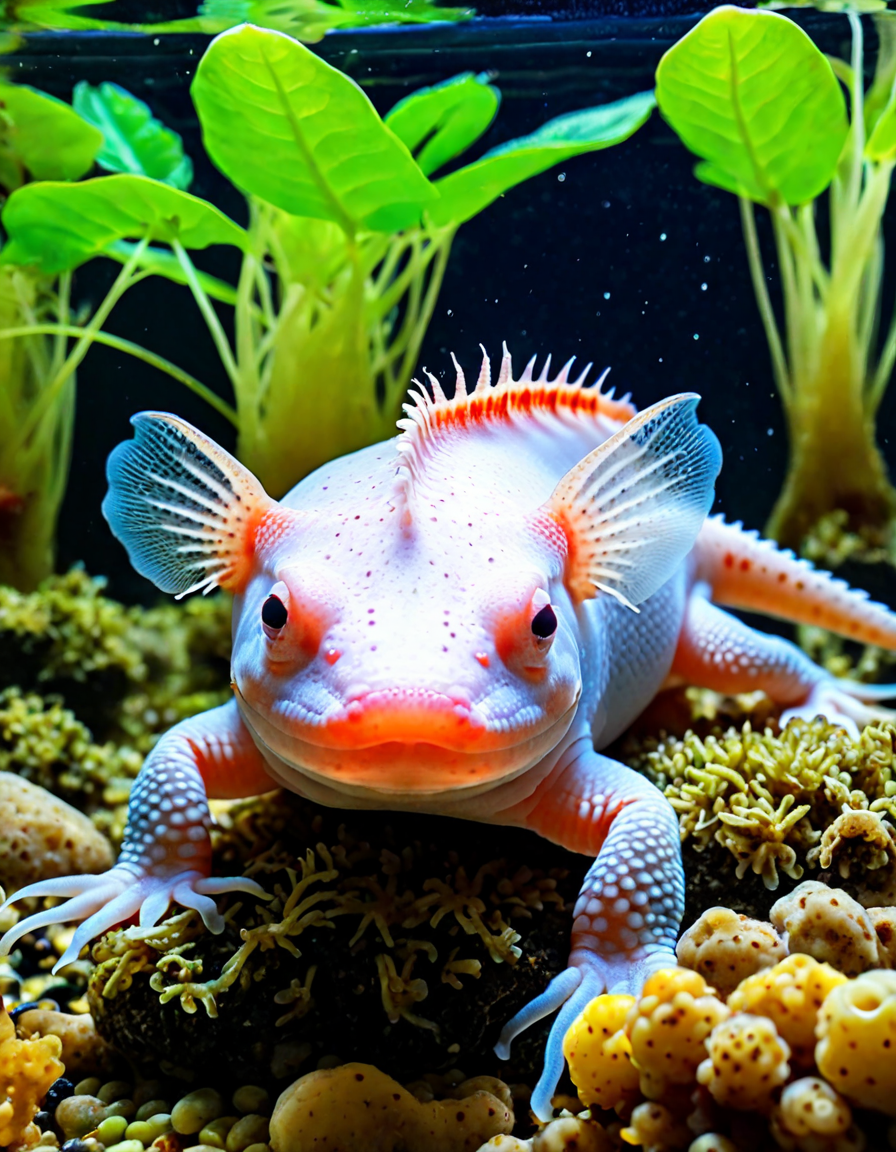
Top 5 Essential Food Types for Your Axolotl
How Long Do Axolotls Live With the Right Diet?
When you consider how long do axolotls live, diet plays an undeniable role. Typically, axolotls can live anywhere from 10 to 15 years under optimal conditions. A well-rounded diet directly influences their immune health and resilience against diseases. Axolotls receiving the right nutrients not only live longer but also exhibit healthier, more active behaviors.
You’ll find that axolotls thriving on a diverse and balanced diet are much less likely to suffer from stress or illness. Maintaining a diet rich in protein and varied food types can significantly enhance their quality of life, leading to happier pets and satisfied owners.
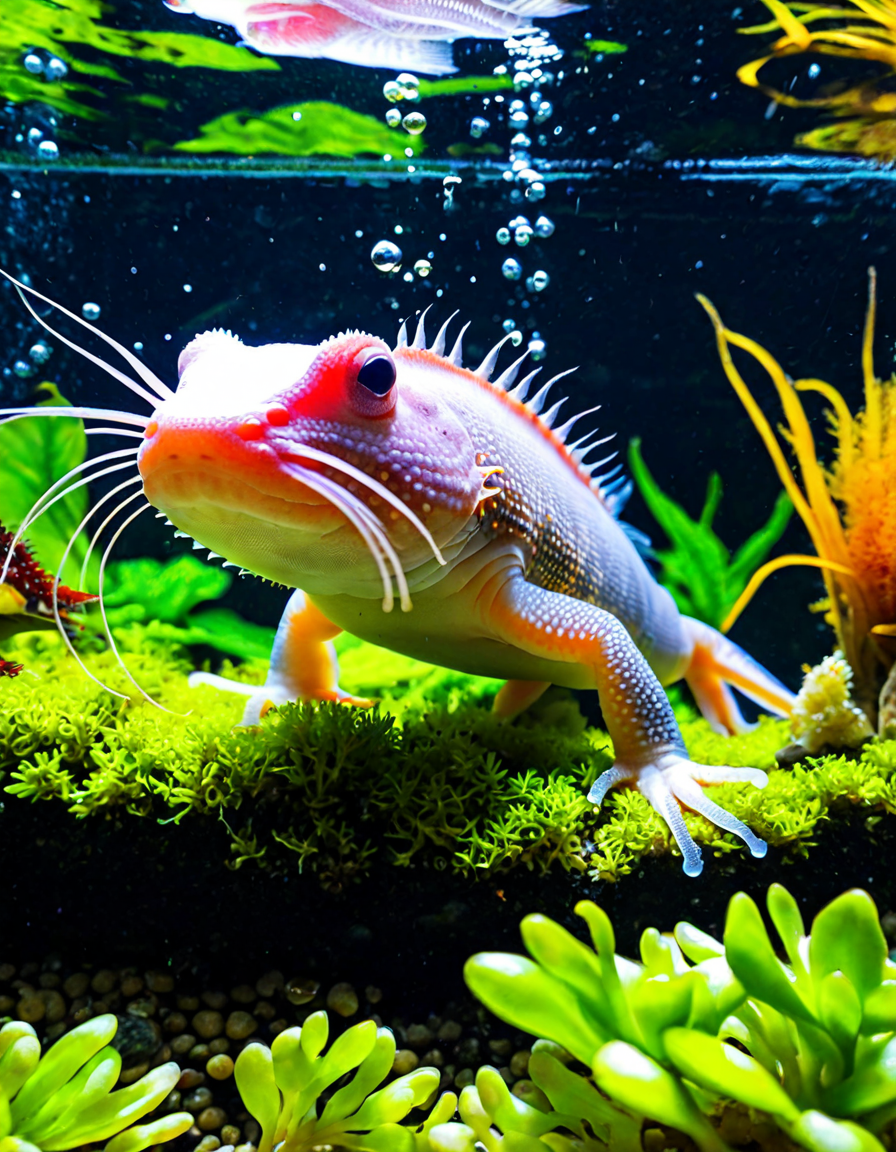
The Dangers of an Improper Diet
Failing to meet an axolotl’s dietary needs can result in some serious health consequences. Malnutrition and deformities are not uncommon if owners rely on unsuitable or inadequate food sources. For example, improper growth and issues with limb regeneration can stem from a lack of sufficient protein.
Over-dependence on a limited diet can lead to vitamin deficiencies. These deficiencies pose long-term risks, affecting your axolotl’s health far beyond just the immediate feeding period. It’s crucial to understand that a balanced diet isn’t optional—it’s essential!
Monitoring Your Axolotl’s Dietary Needs
Keep an eye on your axolotl’s feeding habits as they grow. Newly hatched axolotls thrive on infusoria and live baby brine shrimp. As they mature, introducing larger food options becomes increasingly important for their growth. Regular observation will allow you to adapt their diet appropriately.
Make note of their eating behavior; healthy axolotls should show a keen interest in their food. If they don’t, it might be time to tweak their diet. A simple adjustment can sometimes make all the difference in maintaining their health.
Innovative Feeding Practices
Feeding axolotls doesn’t have to be a boring routine! Have fun with it by using feeding tongs to mimic hunting behavior. You can also create enrichment activities that stimulate natural instincts. Experimenting with various feeding locations or schedules can make mealtime more engaging.
To sum up the essence of caring for these adorable creatures, a well-balanced diet is critical. It’s a necessity that seamlessly connects to how long axolotls live and how well they thrive. By investing time in understanding their specific dietary needs, you contribute positively to their health and longevity. This way, you’re not just keeping an axolotl; you’re nurturing a vibrant companion in your aquatic adventure.
For more engaging articles about proper pet care, check out our tips on giving Your dog a bone to keep them happy, or explore information on eye stain remover For Dogs to help with common issues. Remember, you’re not alone in this journey; countless pet lovers are always eager to share their experiences. So dive in, get informed, and watch your axolotls flourish!
What Is An Axolotl’s Diet?
Understanding what is an axolotl’s diet isn’t just about what they munch on; it offers a glimpse into their unique biology. These fascinating creatures are carnivorous, meaning their diet mainly consists of meat-based foods. In captivity, they thrive on a blend of proteins, such as earthworms, brine shrimp, and specially formulated pellets meant for aquatic pets. Fun fact: axolotls are often referred to as “Mexican walking fish,” even though they’re amphibians! They don’t actually walk like Clark Griswold on a vacation gone wrong but instead glide gracefully through the water.
The Menu of an Axolotl
When diving deeper into what is an axolotl’s diet, one mustn’t overlook the fact that they’re quite the picky eaters. While insects, worms, and small fish are prominent on their plates, offering a variety keeps them both interested and healthy. Imagine a mini pinscher mix With chihuahua—similar in their variety of interests! In the wild, they feast on whatever they can catch, adapting their tastes over time. Thus, providing a balanced diet in captivity is pivotal for their growth and vitality. Furthermore, remember that consistent feeding is crucial; novice owners might compare feeding schedules to managing a Baltimore Ravens roster; keep it organized!
Trivia Tidbits
Here’s something to ponder: did you know that an axolotl can regenerate its limbs? This incredible ability is not only awe-inspiring, but it also indicates their strong health when adequately fed! Now, shift your focus to their preferred snacks. They usually indulge in high-protein diets but can also enjoy the occasional treat, like finely chopped vegetables, though with some caution. And here’s a quirky tidbit—due to their appearance, axolotls have often been linked to various cultural myths, similar to the tales spun in Into The Labyrinth. So, when considering what is an axolotl’s diet, think of it as feeding a little legend that thrives on rich history and high-quality grub.
Remember, feeding them poorly can lead to health issues, akin to a copper penny losing its shine. Owning an axolotl is as much about commitment as it is about enjoying their intriguing habits. So, next time you’re at the pet store or preparing their meal, think of the ant bite Pics you might see as a reminder of how critical good care is! Providing the right diet can brighten your axolotl’s life and, who knows, unlock even more secrets of these enchanting creatures!
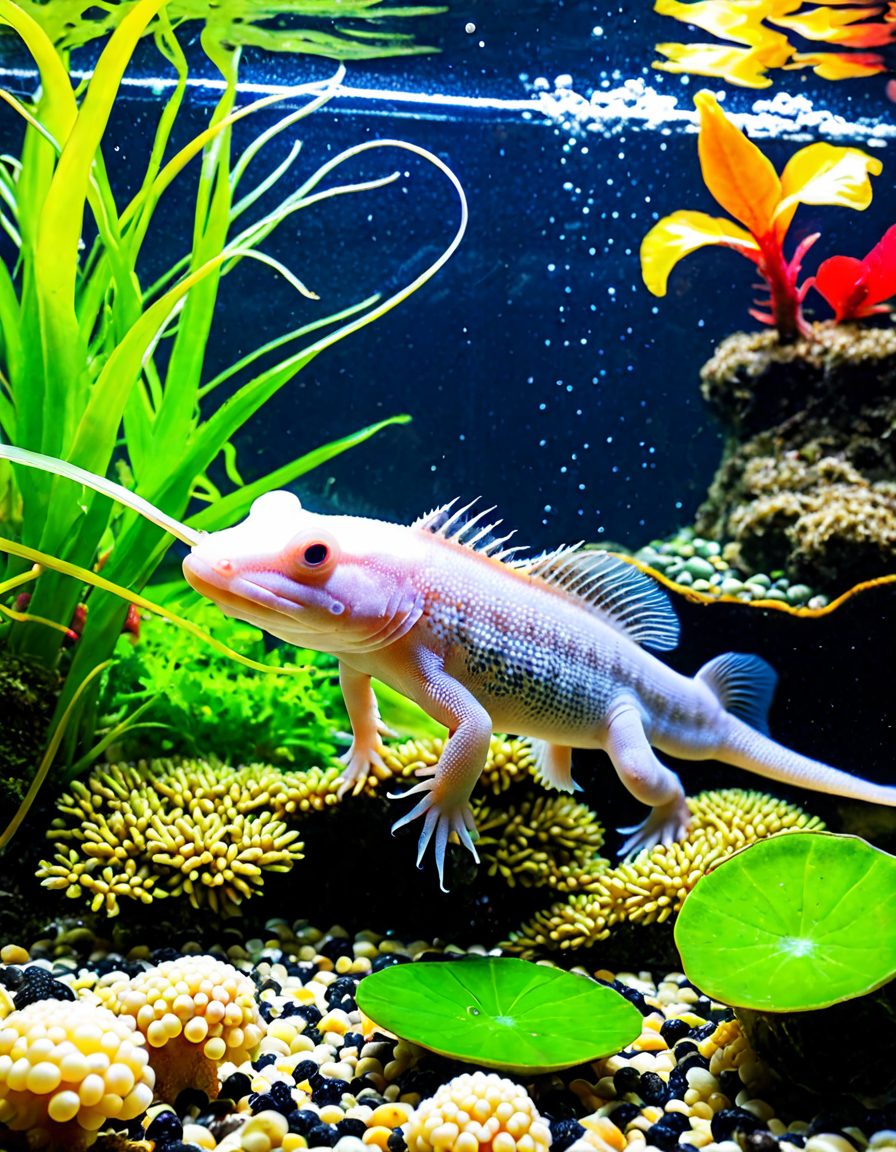
What will make my axolotl happy?
To keep your axolotl happy, make sure their tank is clean, well-filtered, and has plenty of hiding spots like rocks and plants. They also enjoy a stable environment, so avoid sudden temperature changes and keep their water conditions just right.
Can I touch my axolotl?
It’s best not to touch your axolotl too often as their skin can be sensitive. Handling them can also cause them stress and disrupt their natural behavior, so it’s usually better to admire from a distance.
What do axolotls drink?
Axolotls don’t actually drink water like we do; they absorb it through their skin. It’s important to provide them with clean, dechlorinated water for good health.
Can an axolotl eat cooked chicken?
No, axolotls shouldn’t eat cooked chicken or any other meat that isn’t specifically made for them. Their diet mainly consists of worms, bugs, and specially formulated pellets.
What do axolotls love the most?
Axolotls love food, so providing a varied diet of live or frozen food is their favorite treat. They also enjoy having a safe, cozy environment to explore and chill in.
What is the lifespan of an axolotl?
An axolotl can live quite a while; on average, they can reach 10 to 15 years with proper care. Some even live longer!
Does an axolotl bite hurt?
Axolotls have small bites but they don’t really hurt. Their teeth are designed for grabbing prey, so it’s not like a dog’s bite, but it’s still best to handle them gently.
Do axolotls recognize their owners?
While axolotls don’t recognize owners in the same way a dog might, they can learn to associate you with feeding time and might react to your presence.
How often should I clean my axolotl tank?
You should clean your axolotl’s tank regularly, but that doesn’t mean doing a full clean every day. Aim for partial water changes once a week and keep an eye on the filter and decor for any dirt.
Can I put my axolotl in tap water?
You can use tap water for your axolotl, but be sure to treat it first to remove chlorine and chloramine with a water conditioner. This helps keep the water safe for them.
Does Petco sell axolotls?
Yes, Petco does sell axolotls at some locations, but availability can vary, so it’s best to check your local store or their website.
What do axolotls like in their tanks?
In their tanks, axolotls like to have plenty of hiding spots, smooth substrates, and live plants to mimic their natural habitat. They also appreciate a stable temperature with clean water.
Can I buy an axolotl?
Yes, you can buy an axolotl! Find them at pet stores, breeders, or reputable online sellers, but be sure to research care requirements before bringing one home.
What dishes can live with axolotls?
Some fish can cohabitate with axolotls, but it’s tricky. Small, non-aggressive species like certain types of minnows might work, but be careful, as axolotls can eat smaller fish.
What are 5 facts about axolotls?
Axolotls are pretty fascinating! They can regenerate limbs, have external gills, and can breathe through their skin. They also come in various colors, like leucistic and golden albino, and they’re native to lakes in Mexico.
How can you tell if your axolotl is happy?
A happy axolotl may show bright colors and be active in their tank, swimming around or exploring their environment rather than just sitting still.
How to calm down a stressed axolotl?
To calm a stressed axolotl, you need to provide them with a quiet environment, keep their water clean, and avoid sudden movements near their tank. Sometimes a bit of dark hiding space helps too.
How to befriend an axolotl?
Becoming friends with an axolotl takes time. Spend time near the tank, talk softly to them, and feed them regularly. They’ll get used to you and may associate you with good things.
What do axolotls like in their tank?
A good tank setup for axolotls includes plenty of hiding places, a suitable substrate that won’t irritate their skin, and clean, well-oxygenated water. They appreciate things that mimic their natural habitat!

